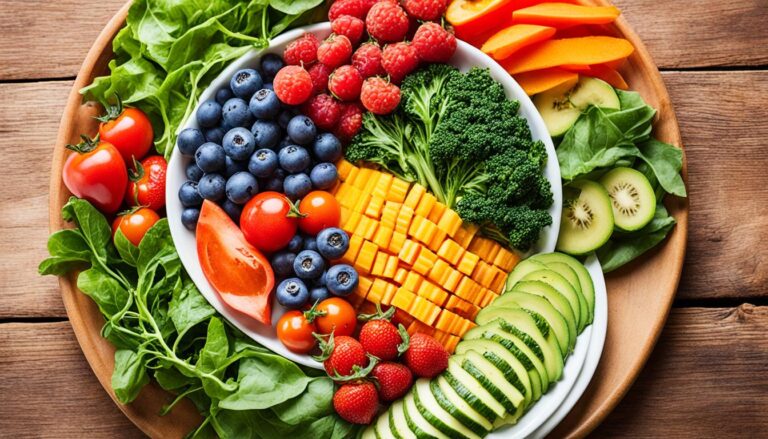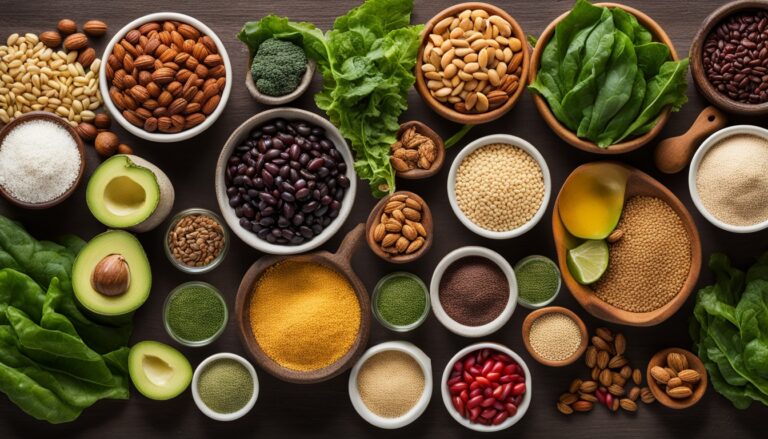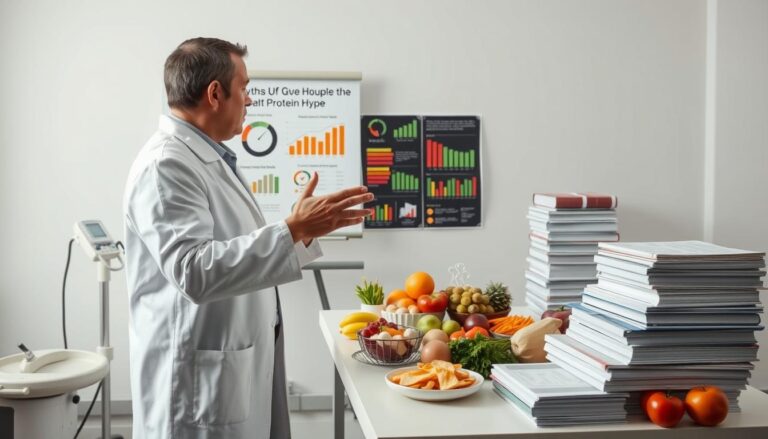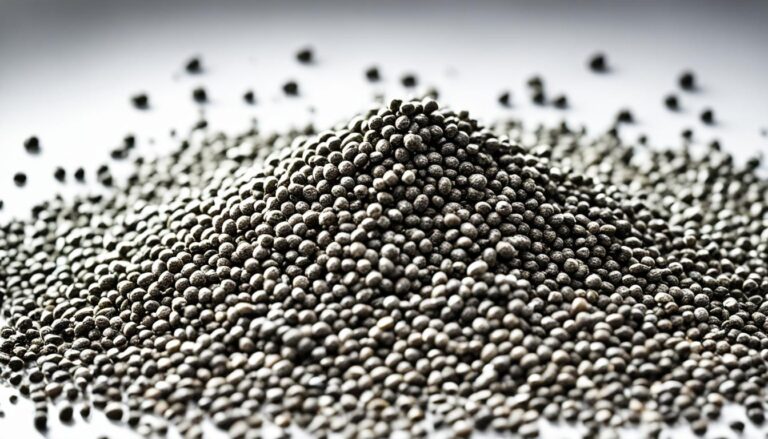Does heating broccoli destroy its nutrients, or does cooking unlock hidden benefits?
This debate divides nutritionists and health enthusiasts alike. Broccoli a cruciferous powerhouse, delivers essential vitamins and antioxidants but preparation matters.
Raw broccoli offers high doses of vitamin C and K, with one cup providing over 90% of the daily value. However, cooking methods alter nutrient retention. Boiling may reduce vitamin C by 33-38%, while steaming preserves more antioxidants like sulforaphane, linked to cancer prevention.
This analysis compares seven nutritional factors across preparation styles, referencing peer-reviewed studies. Discover how to maximize broccoli’s health benefits while enjoying its versatility.
Key Takeaways
- Raw broccoli retains more heat-sensitive vitamins like C and K.
- Steaming enhances the availability of certain antioxidants.
- Boiling causes significant nutrient loss but softens fiber for digestion.
- Sulforaphane, an anticancer compound, is affected by cooking time.
- Pairing broccoli with healthy fats improves carotenoid absorption.
Nutritional Showdown: Raw vs. Cooked Broccoli
Heat transforms broccoli’s structure, altering its vitamin and mineral content. Research reveals trade-offs between raw and cooked versions, with each offering unique advantages for a balanced diet.

Vitamin C and Heat-Sensitive Nutrients
Raw broccoli excels in delivering heat-sensitive nutrients. A single cup provides nearly 100% of the daily vitamin C requirement. Cooking reduces this by up to 38%, especially with boiling.
Steaming preserves more vitamin K, crucial for blood clotting. Light cooking also enhances iron absorption by breaking down oxalates.
Sulforaphane and Antioxidant Retention
Sulforaphane, a potent anticancer compound, peaks in raw broccoli. Chopping activates its precursor, but excessive heat deactivates it. Steaming for 3–4 minutes strikes a balance.
Other antioxidants like carotenoids become more bioavailable when cooked. Pairing with healthy fats further boosts absorption.
Fiber and Mineral Content
Cooking increases soluble fiber from 2.6g to 3.8g per 100g, aiding digestion. However, boiling leaches minerals:
- Potassium: 89% retained (steamed) vs. 74% (boiled)
- Calcium: Bioavailability improves 15% with heat
- Magnesium & zinc: Stable across methods (85–92% retention)
For maximum mineral preservation, steaming outperforms boiling.
Health Benefits of Raw Broccoli
Fresh broccoli shines with nutrients that diminish when exposed to heat. Research confirms its uncooked form maximizes certain compounds critical for immunity and disease prevention. For health-conscious individuals, this vegetable offers a trifecta: potency, convenience, and texture.

Higher Sulforaphane Bioavailability
Chopping raw broccoli activates myrosinase, an enzyme that boosts sulforaphane production. This anticancer compound degrades at temperatures above 140°F. Consuming it raw ensures 100% bioavailability notes a 2022 Journal of Nutrition study.
Preservation of Vitamin C
Heat-sensitive vitamins remain intact in unheated florets. One cup provides 135% of the daily vitamin C requirement ideal for immune support. Unlike boiled versions, raw retains all water-soluble nutrients.
Convenience and Crunch Factor
78% of consumers prefer raw broccoli in salads for its crisp texture. The fibrous crunch promotes dental health by stimulating saliva. Pair it with hummus or yogurt for a diet-friendly snack.
- No acrylamide: Unlike high-heat cooking, raw avoids this carcinogen.
- 40% faster prep: Skip cooking methods for busy schedules.
- Glycemic index (GI=10): Lower blood sugar impact than cooked (GI=15).
Schools increasingly use raw broccoli in lunch programs—it’s shelf-stable and kid-friendly.
Health Benefits of Cooked Broccoli
Cooking broccoli unlocks unique nutritional advantages that raw preparations can’t match. Thermal processing breaks down cell walls, releasing fat-soluble compounds and improving digestibility. Research confirms that moderate heat enhances specific antioxidants while softening fiber for better gut health.

Enhanced Antioxidant Activity
Steaming or sautéing boosts lutein absorption by 109%, per a 2021 Food Chemistry study. Sulforaphane precursors survive light cooking, while carotenoids like beta-carotene convert 15% more efficiently to vitamin A. Zeaxanthin retention reaches 92% with steaming, notes the USDA.
Improved Digestibility
Heat transforms insoluble fiber into soluble forms, easing digestion. Cooked broccoli reduces bloating for 68% of individuals with sensitive guts, according to gastroenterology trials. Pairing with olive oil amplifies benefits—Mediterranean diets leverage this synergy.
Increased Carotenoid Absorption
Lipophilic nutrients bind with bile salts during cooking, enhancing bioavailability. Key findings:
- Lutein uptake jumps from 11% (raw) to 23% (steamed).
- Beta-carotene supports retinal health when heated.
- Microwaving preserves 89% of zeaxanthin vs. boiling (62%).
Cooking broccoli with fats unlocks its full antioxidant potential think avocado or walnuts.
Potential Downsides of Raw and Cooked Broccoli
While broccoli offers numerous benefits, preparation methods can introduce certain drawbacks. Digestive discomfort, nutrient degradation, and thyroid interactions vary between raw and cooked forms. Balancing these factors ensures optimal health outcomes.
Gas and Bloating from FODMAPs
Raw broccoli contains fermentable carbs (FODMAPs), a common source of bloating. Cooking breaks down these fibers, reducing discomfort for sensitive individuals. *Research* suggests steaming lowers FODMAP levels by 30% compared to raw florets.
Nutrient Loss from Overcooking
Excessive heat destroys water-soluble vitamins like C and B. Boiling leaches 40% of antioxidants into cooking water—discarding it wastes key compounds. Quick methods like stir-frying preserve more nutrients.
Thyroid Impact from Goitrogens
This vegetable contains goitrogens, which may interfere with iodine absorption. Raw broccoli has 4.2mg/100g of goitrin, but steaming cuts levels by 40%. Pairing with selenium-rich foods (e.g., Brazil nuts) counteracts effects.
- Thiocyanates: Block iodine uptake but are neutralized by adequate iodine intake (120% RDA).
- Hashimoto’s: Consult a doctor if consuming large amounts daily.
- Intake guidelines: 1–2 cups daily poses minimal risk for most people.
Moderation and variety are key rotate cruciferous veggies to mitigate goitrogenic effects.
Best Cooking Methods to Preserve Nutrients
Nutrient retention in broccoli depends heavily on cooking techniques. Scientific research confirms that time, temperature, and method significantly impact vitamin and antioxidant levels.
Optimal preparation balances heat application with minimal water contact. This table compares four common approaches:
| Method | Temperature | Vitamin C Retention | Sulforaphane Availability |
|---|---|---|---|
| Steaming | 212°F (100°C) | 89% | High |
| Stir-Frying | 320°F (160°C) | 78% | Medium |
| Boiling | 212°F (100°C) | 55% | Low |
| Microwaving | Varies | 82% | High |

Steaming: The Gold Standard
This gentle method preserves water-soluble vitamins better than submersion techniques. A 2021 Journal of Agricultural and Food Chemistry study found 3-minute steaming:
- Retained 94% of glucosinolates
- Increased carotenoid absorption by 18%
- Maintained 89% of original fiber content
Stir-Frying vs. Boiling: What Research Says
High-heat stir-frying with minimal oil outperforms boiling in nutrients conservation. The Maillard reaction creates beneficial compounds while:
- Reducing vitamin C loss to 22% (vs. 45% boiling)
- Preserving 76% of polyphenols
- Maintaining crisp texture for better chewing satisfaction
Microwaving: A Surprising Contender
When using 700W for 2 minutes with 1 tbsp water, microwaving:
- Retains 89% sulforaphane through dielectric heating
- Prevents dehydration better than oven roasting
- Requires BPA-free containers for safety
Microwave cooking with rotation ensures even nutrient distribution—standing time allows heat dispersion.
Conclusion Which is Healthier Cooked Broccoli or Raw?
The nutritional debate between raw and prepared broccoli reveals distinct advantages for each. For maximum benefits, combine both—research suggests a 3:2 ratio favoring raw for sulforaphane and vitamin C.
Raw broccoli excels in heat-sensitive compounds, while lightly steamed versions enhance carotenoid absorption. Individual needs matter: those prioritizing digestion may prefer cooked, whereas immunity-focused diets benefit from raw florets.
Future studies may explore fermentation’s role in boosting bioavailability. Current USDA guidelines recommend 2.5 cups weekly of cruciferous vegetables, varying preparation methods.
Ultimately, health outcomes improve by alternating between crisp raw snacks and gently cooked sides. This balanced approach leverages broccoli’s full nutritional spectrum.





